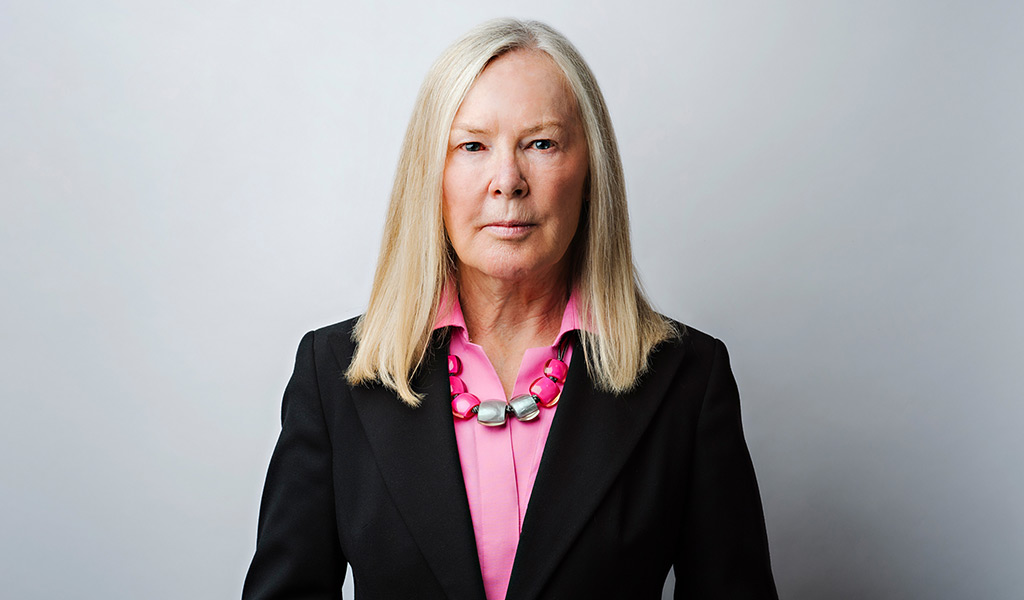Background
In Psaila v Kapsalis and City of Toronto, the Court of Appeal upheld the lower Court’s decision to grant summary judgment in favour of the City of Toronto (the “City”). The facts are quite simple. The action arises from a motor vehicle accident that took place, at an intersection in the City, on March 28, 2015. The City did not receive the required notice, under the Municipal Act, until April 2, 2018 and moved for summary judgment. The main issues for the Court were whether or not this matter was appropriate for a summary disposition, whether the plaintiff had demonstrated that they had a reasonable excuse for failing to provide notice in a timely matter and that the City suffered no prejudice as a result of the delay.
The City advised the Court, at the outset of the Motion, that it was only pursuing the statutory notice ground in support of its request for summary judgment. In considering Rule 20 of the Rules of Civil Procedure, which govern summary judgment, the Court held that, in this case, as facts and credibility were not in issue this matter was appropriate for summary judgment. The Court went on to consider the facts relevant to the notice requirement[1].
Notice Requirement: The Facts
The motor vehicle accident occurred on March 28, 2015 and involved the plaintiff, Peter Psaila (“Psaila”) and the defendant driver Nick Kapsailis (“Kapsailis”). Each were attempting a turn and the Psaila vehicle hit the left rear end of the Kapsalis vehicle. Psaila retained counsel and provided Kapsalis with notice of their claim on June 29, 2015. Psaila obtained the complete police file on August 10, 2015 which included competing statements given by Psaila and Kapsalis.
Psaila started the action against Kapsalis by Statement of Claim dated December 2, 2015. Psaila’s allegations of negligence were broadly pleaded. Kapsalis filed a Statement of Defence dated March 21, 2016, with a Jury Notice, and pleaded that Psaila’s negligence caused or contributed to the accident, that Psaila had the “last clear chance to avoid the collision” and “failed to keep a proper lookout or pay adequate attention to the road.”
Prior to examination for discovery Kapsalis produced scene photographs. Examinations for discovery took place on January 17 and February 17, 2017. Shortly after discoveries, due to incapacity, Psaila required a litigation guardian, which was appointed on November 30, 2017.
Following discoveries, on February 1, 2018, Kapsailis served an expert engineering accident reconstruction report blaming Psaila for the accident. The report suggested that Psaila had sufficient time to avoid the accident and put his perception of time into issue. Psaila, in turn, retained an expert engineer to respond to this report.
On March 29, 2018, Psaila’s engineer recommended putting the City on notice “in an abundance of caution” as there may be a potential negligence claim against the City.
On April 2, 2018, Psaila provided the City notice as required by the Municipal Act.
An Amended Statement of Claim was issued on April 11, 2018 adding the City as a defendant and putting into issue the design of the intersection where the accident occurred as a cause or contribution to the cause of the accident.
The City filed a Statement of Defence and Crossclaim dated August 14, 2019. Kapsalis filed an Amended Statement of Defence and Crossclaim against the City dated August 29, 2019.
The Law
Sections 42(6) and 42(8) of the Municipal Act set out the framework for the basis of this motion:
42(6) No action shall be brought for the recovery of damages … unless, within 10 days after the occurrence of the injury, written notice of the claim and of the injury complained of … has been served upon or sent by registered mail to,
- The city clerk
…
42(8) Failure to give notice or insufficiency of the notice is not a bar to the action if a judge finds that there is reasonable excuse for the want or the insufficiency of the notice and that the City is not prejudiced in its defence
The Court confirmed that the burden is on the plaintiff to prove that they have satisfied this two part test.
Analysis
Reasonable Excuse
The Court began its analysis by indicating that when determining what constitutes a “reasonable excuse” the words should be given their “plain and ordinary meaning.” It went on to state that in considering whether the plaintiff has met their onus in showing that their delay was reasonable, the Court must consider the plaintiff’s legal capacity, the length of the delay, and any explanation given for the delay.[2] When the plaintiff came into possession of the material facts regarding potential liability against the City is also an important factor, in this analysis, according to the Court, and the plaintiff must show they exercised due diligence in pursuing these facts.
The only explanation offered by the plaintiff for delaying to put the City on notice was that they had not considered the possibility of a design flaw, at the intersection in question, until after they retained their engineer to respond to the defendant’s expert report.
The key to the Court’s analysis was whether Psaila had reasonably discovered facts that would have alerted him to a potential claim against the City before having retained their engineering expert. To answer this question, the Court held that the standard to be applied is that of a “reasonably prudent person in pursuing the facts.”
In concluding that Psaila did have knowledge of sufficient facts to discover that there may have been a potential Claim against the City, the Court found the following to be relevant:
- The plaintiff and his counsel knew the location of the accident, knew that the City had responsibility of designing the intersection in question, and knew that Kapsalis was blaming Psaila for not avoiding the accident. Further, police statements and the discovery evidence should have led a reasonably prudent plaintiff to investigate the intersection and put the City on notice;
- At the very latest, when the plaintiff received the Kapsalis engineering report that should have immediately raised a red flag resulting in giving the City notice within ten days after receiving their expert report. However, the plaintiff waited for two months after receipt of this report without providing a reasonable excuse.
Because the Court concluded Psaila did not have a reasonable excuse to justify their delay in providing notice, it was not necessary to consider the issue of prejudice to the City; however, the Court chose to provide their analysis.
Prejudice
Once again, the onus was on Psaila to lead evidence that the City suffered no prejudice. In attempting to do so, the plaintiff argued that the intersection and its design have remained unchanged since 2003, the City chose not to sue the engineering firm who designed the intersection, the City refused to disclose the names of potential witnesses from this engineering firm, and there was evidence that documents relating to the 2003 design project had been lost or destroyed.
The City responded and submitted that it had suffered prejudice in that, due to late notice, the relevant records relating to the design of the intersection could not be located and had likely been destroyed thereby hampering their defence of this action. The Court did not place much weight on this argument and noted that the City did not adduce any evidence as to when it was likely the documents in question were destroyed “aside from speculation.”
Based on the evidence, the Court held that the second branch of the test, regarding prejudice, raised a genuine issue for trial.
Appeal Decision
Psaila, unsuccessfully, appealed the lower Court’s decision.
The appellate Court found that Psaila knew the location of the accident, knew of the City’s responsibility for designing and maintaining it, and knew that the defendant was blaming him for failing to avoid the collision. The Court went on to state:
- The motion judge pointed out that the allegations in the Statement of Defence were premised on the assumption that the design and layout of the intersection permitted a reasonably prudent drive to have seen the defendant’s motor vehicle and take defensive action to avoid a collision. This should have let Psaila to investigate the intersection and put the City on notice.
- The Court agreed that, as the motion judge found, at the very least, Psaila should have provided the City with notice 10 days after receiving Kapsalis’s expert report, but did so two months after receiving it.
The Court dismissed the appeal.
Take Away
While this decision does not change the state of the law it is a reminder that the plaintiff bears the onus of establishing “reasonable excuse” for failing to provide timely notice and that the defendant will not be prejudiced in its defence as a result of the delay in giving notice. These decisions are fact specific.
Waiting to receive an expert opinion is not a reasonable excuse when the available evidence, such as a police report, witness statements or even the allegations in the Statement of Defence, raise the possibility of a claim. When Psalia came into possession of these material facts was significant in this decision. Even had the plaintiff put the City on notice within ten days after receiving their expert report this decision suggests that the defendant would likely not have been successful on summary judgment.
This case is also relevant to the Occupiers’ Amendment Act, effective as of January 29, 2021, which has a similar requirement that notice be given in slip and fall incidents involving snow and ice. This Act, allows some leeway, like the Municipal Act, if there is a reasonable excuse for failing to provide the required notice and if the defendant is not prejudiced.
Given this decision, whenever there is even the slightest possibility of negligence against the City, or other parties in slip and falls involving snow and ice, it would be prudent to put the potential parties on notice immediately. There is no disadvantage of doing so and by fulfilling the notice requirement your client will be protected.
See Psaila v Kapsalis and City of Toronto, 2021 ONSC 1308, aff’d 2022 ONCA 37.
[1] See Hennes v City of Brampton, 2014 ONSC 116, at para 30; Argue v Tay (Township), 2012 ONSC 4622, at paras 27-28, aff’d 2013 ONCA 247 (“Argue”); and Patrick v The Corporation of the Municipality of Southwest Middlesex et al, 2017 ONSC 17.
[2] The Court relied on the Court of Appeal decision Azzeh v Legendre, 2017 ONCA 385.

